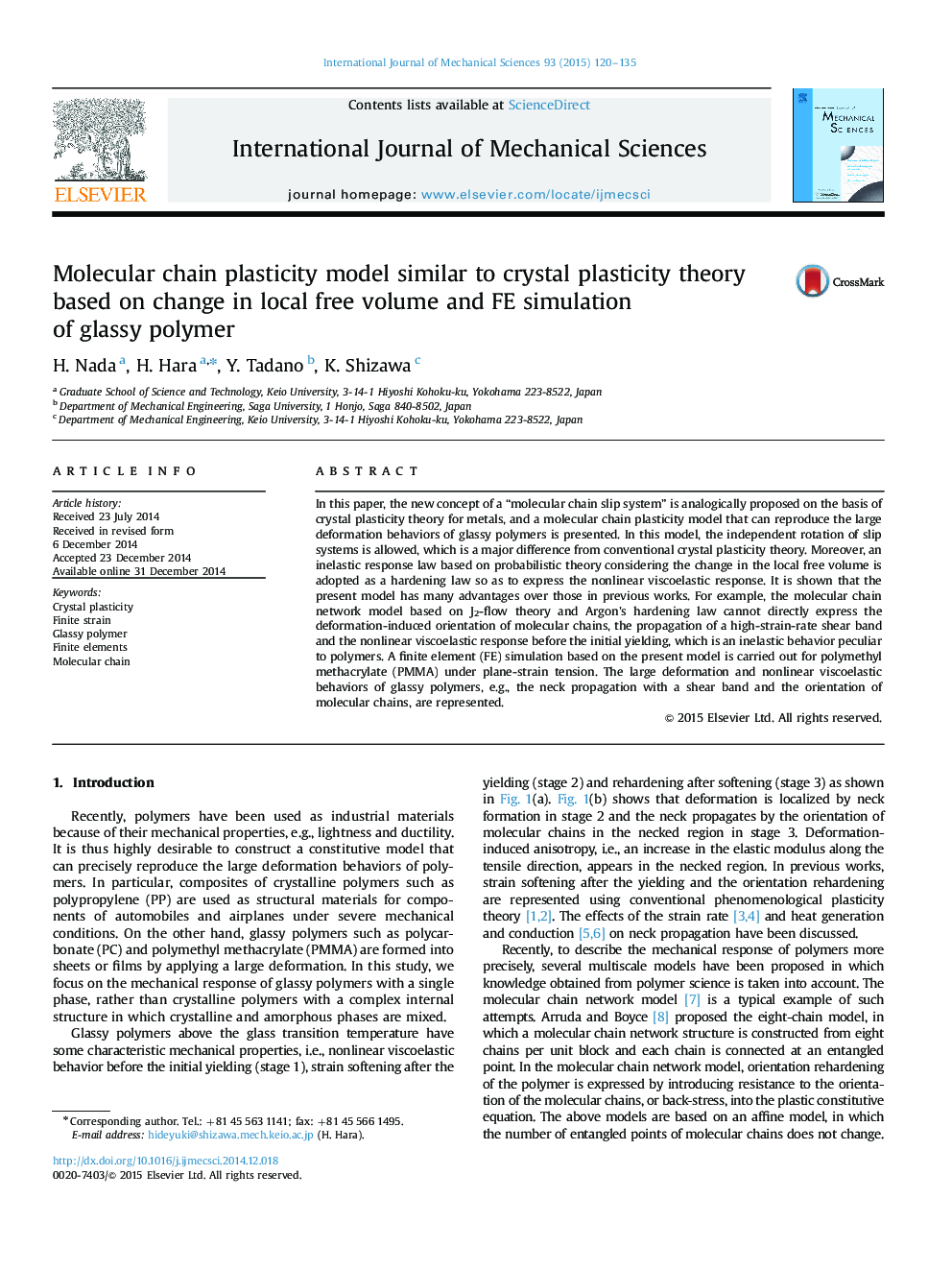| Article ID | Journal | Published Year | Pages | File Type |
|---|---|---|---|---|
| 783417 | International Journal of Mechanical Sciences | 2015 | 16 Pages |
•A material model like crystal plasticity theory is newly proposed for glassy polymer.•Inelastic response law considering change in local free volume is employed.•A FE simulation is carried out for PMMA based on the present model.•This simulation can reproduce formation and propagation of strain rate shear band.•Deformation-induced anisotropy with molecular chain orientation is represented.
In this paper, the new concept of a “molecular chain slip system” is analogically proposed on the basis of crystal plasticity theory for metals, and a molecular chain plasticity model that can reproduce the large deformation behaviors of glassy polymers is presented. In this model, the independent rotation of slip systems is allowed, which is a major difference from conventional crystal plasticity theory. Moreover, an inelastic response law based on probabilistic theory considering the change in the local free volume is adopted as a hardening law so as to express the nonlinear viscoelastic response. It is shown that the present model has many advantages over those in previous works. For example, the molecular chain network model based on J2-flow theory and Argon׳s hardening law cannot directly express the deformation-induced orientation of molecular chains, the propagation of a high-strain-rate shear band and the nonlinear viscoelastic response before the initial yielding, which is an inelastic behavior peculiar to polymers. A finite element (FE) simulation based on the present model is carried out for polymethyl methacrylate (PMMA) under plane-strain tension. The large deformation and nonlinear viscoelastic behaviors of glassy polymers, e.g., the neck propagation with a shear band and the orientation of molecular chains, are represented.
